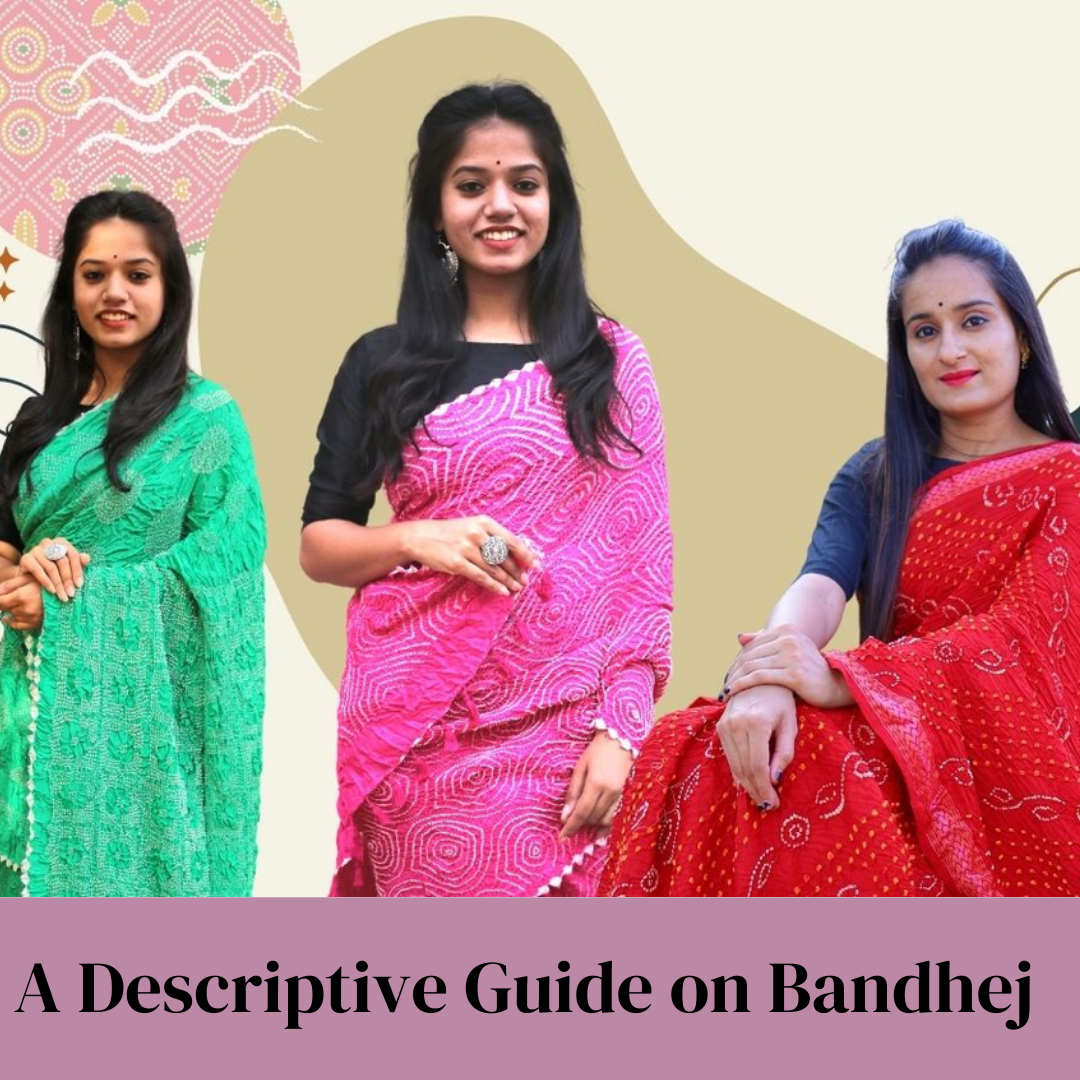The word bandhej or bandhani is used to inter-relate to each other. The term is originated from the Sanskrit term banda, which depicts “to tie” in English. The popular handcrafted technique is done on the fabric, which is mainly found in the parts of Rajasthan and Gujarat. A section of small sections of the material is tied and dyed in the natural colors, resulting in unique colors designs and patterns. Following the bandhej, various other ties and dye techniques exist across the world, which produces a similar kind of design but uses different methods.
Below deep down, we will talk about this popular ethnic embroidery Bandhej.
History of the Bandhej
The Bandhani or bandhej is among one of the oldest tie and dye techniques on the fabric, which is said to be 5000 years. Evidence along with the various historical books has mentioned the use of the bandhani saree. Several kings and emperors of India used to wear clothes with bandhej art on them.
The first bandhej saree was worn during Bana Bhatt’s Harshacharita marriage ceremony.
One of the earliest visual representations of the bandhej art were found in the Ajanta caves in India.
The popular Khatri community of Gujarat started the handcrafted work of bandhani on the fabric. This beautiful art is also found in the various other sections of the northern part of our country. The bandhani print of Gujarat also influences the Leheriya print of the Rajasthan, and both the print have similarities in their pattern and design.
Technique of Bandhej
The techniques of the bandhej is as interesting as their designs and pattern. The tying method and natural dyes play one of the crucial roles in the complete process.
- Fabric Preparation- The first step which comes into action is taking a cotton and silk fabric as the base of the bandhani fabric.
- Tying- Various fabric sections are connected in the knot’s shape using the waterproof thread. This helps the tied parts become resistant to the dye and keep it remain the same as the color of the clothes.
- Dyeing- It is one of the essential parts of the bandhej process; dying is the process where the fabric is dyed into the color solution. Authentically, if we take a look, only a few colors are used at the time of making the bandhani product. Another thing that makes the bandhej so popular is the use of the natural colors which are used during the complete dyeing process.
Style and Variety of Bandhej
The amalgamation of the handcrafted styles along with the beautiful colors make bandhej popular all across the world. The bandhej comes in a variety of beautiful colors and designs. These assorted colors and procedures vary depending from region to region. If we take a look from the authentic side, only a few selected hues of the colors are used at the time of the creation of the product. Some popular bandhani colors are red, yellow, green, blue and black.
Once the initial step of processing the dyes and ties is completed, the knots are untied, resulting in the formation of varieties of traditional symbols such as the round, dots, and stripes. The patterns and styles make bandhej more beautiful than ever.
Some popular bandhej patterns are the Leheriya, Shikari, Ekdali and Mothra. All these patterns depend on how the fabric is tied with the strings.
Talking about the outfit, the bandhej is famous all across the world. The bandhej dresses is usually comprised of Patori, Khombi, Chandrokhani and Gharchola, which can be found on the outfits such as Kurtas, Sarees, salwar suit, and Chaniya Cholis, and kameez. All these outfits come in a variety of popular colors and designs and each of them transmits a different meaning to it. If you also love to wear bandhani and look forward to buy online bandhani saree, suits and dupattas, you can visit the one-stop destination, Kutchi Bazaar. They are specialized in selling bandhani and Ajrakh clothes online all across India.
Global Popularity of Bandhej Across the World
The popularity graph of the bandhej is increasing continuously across the world. Earlier the bandhej was only limited to the women only. With the continuous evolution of the fashion trend, artisans and designers have started working on outfits for men. Due to this heavy demand, famous celebrities and fashion designers also prefer to wear ethnic bandhej designs. Every year during the wedding and festival season the demand for the bandhej skyrockets. It is that time when men and ladies both prefer to choose bandhej as traditional or ethnic wear.
With the increase in the demand, the artisans which were only limited to the state of Gujarat now started exporting across the world.



